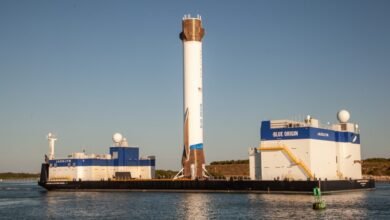Robinhood Co-Founder Bets Big on Beaming Solar Power from Space with Lasers
From Fintech Billions to Orbiting Power Plants

▼ Summary
– Baiju Bhatt, co-founder of Robinhood, launched Aetherflux to develop space-based solar power (SBSP) with $50 million in Series A funding, including $10 million of his own investment.
– Aetherflux plans to use constellations of small satellites with infrared lasers to transmit solar energy to compact ground stations, aiming for a demonstration launch in 2026.
– SBSP offers the advantage of continuous solar energy capture in space, overcoming the intermittent nature of Earth-based solar power due to weather and daylight limitations.
– Aetherflux’s strategy involves using off-the-shelf components and has secured a SpaceX Falcon 9 launch slot, with thermal management in space being a key engineering challenge.
– The U.S. Department of Defense has funded Aetherflux, indicating military interest, while the company ultimately aims for commercial viability to enhance energy independence and disaster response.
Baiju Bhatt, co-founder of the stock-trading platform Robinhood, is leveraging his considerable resources for a venture far removed from Wall Street: beaming solar energy down from space. His new company, Aetherflux, aims to tackle the ambitious challenge of space-based solar power (SBSP), armed with a recently closed $50 million Series A funding round, which includes $10 million of Bhatt’s own capital.
Announced in late 2024, Aetherflux isn’t just reviving an old sci-fi concept; it’s pursuing a specific, modern approach. Instead of the large, microwave-beaming satellites often envisioned, Aetherflux plans to use constellations of smaller satellites equipped with lasers to send harvested solar energy to relatively compact ground stations. The company is targeting an aggressive timeline, aiming for an initial demonstration launch in 2026.
Why Go to Space for Sunshine?
The fundamental appeal of SBSP lies in overcoming the limitations of Earth-bound solar panels. While terrestrial solar is now the cheapest form of new utility-scale electricity, its output is inherently intermittent – dependent on daylight hours, weather conditions, and geographic location. Storing and transporting this energy efficiently remains a significant challenge.
In orbit, however, satellites can potentially bask in uninterrupted, more intense sunlight 24/7. The concept involves capturing this energy high above the atmosphere and wirelessly transmitting it to receiving stations on Earth, offering the potential for a continuous, clean power source.

Aetherflux’s Laser-Focused Strategy
Aetherflux’s plan hinges on using infrared lasers rather than microwaves for power transmission. Andrew Yarmola, Aetherflux’s head of engineering, notes this allows for higher power density and the ability to target smaller ground receivers, potentially around 16 to 32 feet in diameter, which could eventually be mobile.
For its 2026 demonstration, Aetherflux has contracted with Apex Space for a satellite bus and secured a launch slot on a SpaceX Falcon 9 rideshare. Aetherflux is developing the crucial payload, including the laser system, optics, and precision pointing mechanisms, largely using off-the-shelf components where possible. Managing the extreme thermal environment of space is cited as a key engineering hurdle.
Navigating Hurdles and History
The idea of SBSP dates back decades, but recent advancements in reusable rockets (lowering launch costs) and successful technical demonstrations have renewed interest. Caltech’s MAPLE experiment notably achieved space-to-Earth microwave power transmission in 2023. However, significant economic and technical challenges persist. A 2024 NASA assessment, focused on specific large-scale designs, concluded SBSP was considerably more expensive than terrestrial renewables, though proponents argue newer, modular approaches like Aetherflux’s could change the equation.
Strategic Implications and Future Vision
Aetherflux has also secured funding from the U.S. Department of Defense, highlighting the strategic military interest in reliable power delivery in remote or contested areas. Bhatt has explicitly mentioned this potential application. This aligns with broader geopolitical interest, particularly as China pursues its own ambitious SBSP program aiming for a large orbital station by 2030.
While initial applications might be military, Aetherflux states its ultimate goal is commercial viability, aiming to provide clean, continuous energy to supplement terrestrial grids, aid during disasters, and enhance US energy independence. “Our goal is that we figure out what the shortest path is to being able to demonstrate this,” Bhatt stated previously, emphasizing the need to prove the concept works in space.
(Inspired by: Freethink)







